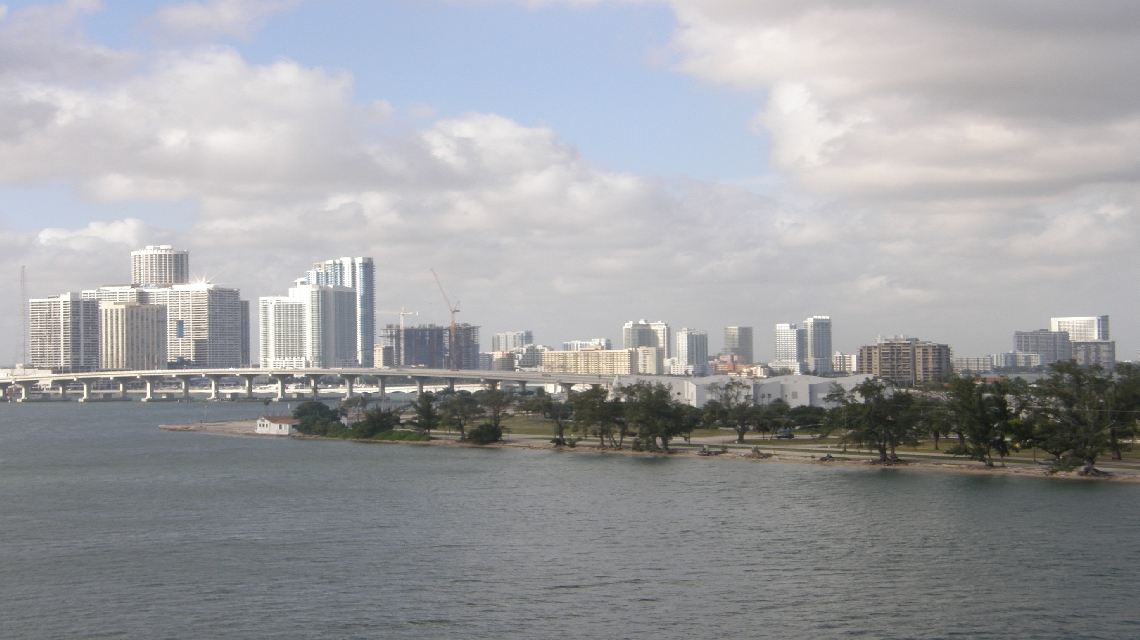NOAA has chosen sites in Florida and Puerto Rico as the next two Habitat Focus Areas under NOAA’s Habitat Blueprint. The NOAA Habitat Blueprint builds on existing programs, prioritizes NOA activities, and guides future actions to conserve, protect, and restore habitat with an emphasis on livings shorelines. Goals for this work include sustainable and abundant fish populations, recovery of threatened and endangered species, protection of coastal and marine areas and habitats at risk, resilient coastal communities, and increased coastal/marine tourism, access and recreation.
Florida’s Biscayne Bay
Scientists and resource managers worry that Biscayne Bay may reach a “tipping point” toward conditions where nutrients that support these dense algae growths would be abundant and the decay of the algae will deplete the shallow waters of oxygen. The possible accompanying loss of seagrass cover may be impossible to halt or reverse.
We’ve only recently learned the extent of the threats posed by algal blooms. The recent appearance of expansive algal blooms in the southern, most pristine, part of the Bay is troubling. Water quality monitoring, always somewhat limited and patchy, has declined. Further investigations into the algal blooms and the water quality conditions that promote these blooms are needed and should be accompanied by efforts to reduce nutrient inputs wherever possible.
Bay fishery and protected species’ nurseries, as well as recreational activities within the bay and on the adjacent reef, depend upon clean, clear waters. Tourism and recreational activities are major industries and sources of revenues, jobs, and income for the Biscayne Bay area, and both are directly and indirectly influenced by the ecological health of the bay.
NOAA has considerable involvement in Biscayne Bay research and conservation. The agency has partnered with other federal, state, and local agencies in the Comprehensive Everglades Restoration Project: an effort to restore south Florida ecosystems, including coastal waters. NOAA also works with Biscayne National Park and Miami-Dade County to monitor water quality, physical, and biological parameters in Biscayne Bay. Partners include Biscayne Bay Regional Restoration and Coordination Team, Biscayne National Park, Florida Department of Environmental Protection, Tropical Audubon Society, Clean Water Action, National Parks Conservation Association, University of Miami, and Florida International University.
Puerto Rico’s Northeast Reserves and Culebra Island
The Northeast Reserves and Culebra habitats are home to coastal forests, wetlands, a bioluminescent lagoon, seagrass beds, shallow and deep coral reefs, and miles of pristine beaches. Leatherback sea turtles nest on the beaches, while manatees, green and hawksbill turtles, and bottlenose dolphins are frequently sighted. A variety of coral species—including those protected under the Endangered Species Act—can be found along with diverse fish species that depend on these valuable habitats. This area is also of great economic value, thanks to thriving tourism, seven marinas, and recreational and commercial fisheries.
The Northeast Reserves and Culebra Island encompass a combination of urban and protected lands. This lush region has experienced significant decline in coastal and marine habitats, such as mangrove, coral, and seagrass. This is due largely to unsustainable coastal development and recreational and commercial uses, land-based sources of pollution, and climate change impacts such as rising sea surface temperatures.
NOAA will protect and restore coastal habitats and resources within the Northeast Reserves and Culebra Island through conservation projects, management based monitoring and research, and training and education programs.
NOAA partners and local communities are already engaged in multiple projects in Puerto Rico’s new Habitat Focus Area. Partners include: Puerto Rico Department of Natural and Environmental Resources, Puerto Rico Sea Grant, Caribbean Fishery Management Council, and Caribbean Coastal Ocean Observing System.
Why Do We Need a Coastal Habitat Blueprint?
Protecting our natural infrastructure is vital to protecting our communities and their economies as well as fisheries and recreational opportunities along our coasts. With continued widespread loss and deterioration of coastal and marine habitats, we are in danger of losing this infrastructure. The NOAA Habitat Blueprint works to conserve habitats with a vision of healthy habitats that sustain resilient and thriving marine and coastal resources, communities, and economies. Previously selected Habitat Focus Areas include: Russian River, CA; West Hawai’i, HI; Manell-Gues watershed, Guam; Choptank River, MD/DE; Musekgon Lake, MI; St. Louis River, MN/WI, and Penobscot River, ME.
For more information, visit www.habitat.noaa.gov.






